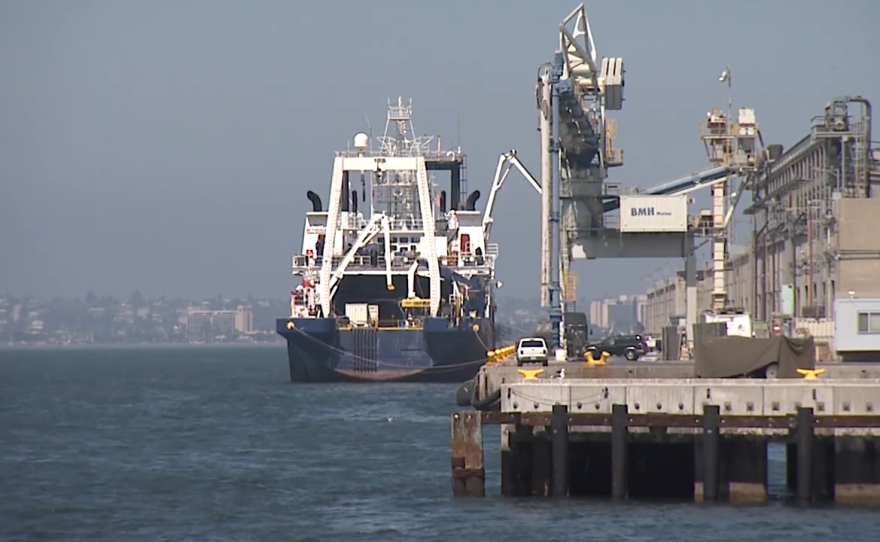The Port of San Diego approved a sweeping new plan to clean up the air on port facilities and in nearby neighborhoods.
The panel voted five-to-one to approve the Maritime Clean Air Strategy, MCAS, a policy document that lays the groundwork to transition port vehicles from diesel-powered to electric-powered.
Commissioners Michael Zucchet, Sandy Naranjo, Ann Moore, Rafael Castellanos, and Jennifer LeSar voted to approve the document.
“We’ve got to get going.” Said commission chair Michael Zucchet.
Commissioner Dan Malcolm dissented.
“We need to have realistic infrastructure and realistic technology,” said Malcolm. “Based on what I hear, I’m not sure that we’re quite there.”
Commissioner Gary Bonelli was absent.
Port staff says the plan aims to hit 100 percent zero emission vehicles by 2030. That is five years before the state of California requires that transition.
The port officials want to move faster than the state and they wanted to show support for the movement toward electric vehicles, not discourage them.
The MCAS is a major step toward cleaning up the air in port-side communities which have long suffered from some of the most polluted air in California.
“I suffer from chronic rhinitis and irritated eyes because of pollution in the air,” said Emily Villagrana, a Barrio Logan resident. “It causes consistent sinus infections and those infections have triggered vertigo.”
Diesel pollution in Barrio Logan and National City, predominantly Latino communities, is identified as a severe health hazard by California health officials.
Asthma rates there are among the highest in the state.
The California Office of Environmental Health Hazard Assessment concludes the portside communities have air that is dirtier than the quality of the air in 95 percent of the state’s communities.
“The environmental racism has happened for decades,” said Diane Takvorian of the Environmental Health Coalition. “I want the document to chart a clearer path to achieving its goals.”
Clean air is not the only concern. Port staff say the plan will not adopt new technologies that lead to the elimination of jobs. But not all people are convinced.
“Seventy-thousand jobs are at jeopardy,” said 74-year-old Raymond Leyba.
The Chula Vista resident has worked at the port for decades and he suffers from asthma. He is concerned the port is moving too fast.
“I fear it will cost the port business,” Leyba said.
Staff said the goal remains clean air.
“The plan has unrealistic goals and timelines,” said Sharon Cloward, president of the Port Tenant’s Association. “We do not believe we have been heard.”
Cloward said the region’s truckers have been completely ignored and she implored the Port to reach out to drivers instead of relying on consultants.
The port facilities generate about 86,000 truck trips a year. The MCAS would insure that 40% of the trips by 2026 would be from Zero Emission vehicles.
The Tenth Avenue Terminal covers 96 acres and includes eight bayside berths to load and unload cargo. Dole is a major tenant.
The National City Terminal is 135 acres with four working berths. Its primary business includes handling imported cars. The facility also handles lumber and other large cargo.
The Port’s cargo terminals are also “strategic ports,” designated to support cargo and vessel operations for the U.S. military’s Transportation Command and Military Sealift Command.
The port plans to update the clean air strategy plan every two years to account for and incorporate industry advances and to measure progress that the port is making.
In addition to the MCAS, the port also voted to accept nearly $100 million in federal COVID relief funding. Twenty-five million dollars will be set aside to help the port achieve the public agency’s electrification goals.
“That’s a significant investment,” Zucchet said.








